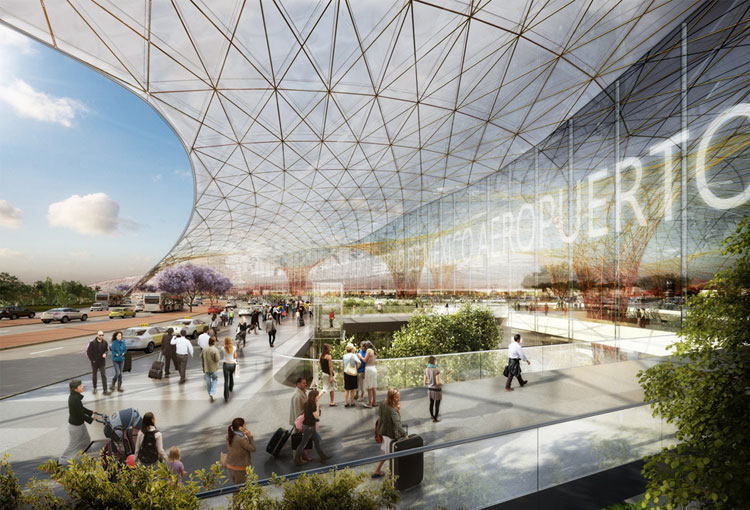Mexico City Airport
Monday, May 16, 2016

Private enterprise will likely have a major role in the development of a new international airport in Mexico City, as budget cuts reduce the role originally planned for the state.
Debate persists about the environmental impact of the plan, which includes Aerotropolis, a 375-hectare (950-acre) commercial zone, with hotels, offices, industrial parks and free-trade zones.
But the project will proceed, insists the government, as increased demand makes the existing airport obsolete.
The plan calls for the airport to go into operation in 2020 with three runways, and a terminal building which can handle up to 68 million passengers a year.
As far as investment is concerned, the private sector will be invited to contribute 70% of the capital cost of some $13 billion (nearly 200 billion pesos), compared to 40% as originally planned, according to Grupo Aeroportuario de la Ciudad de México, the state enterprise responsible for the project.
Depending on the state of public finances, private participation could increase further.
Of total investment, some three quarters will go to infrastructure, and about 10% for hydrology works.
Another 10% has already been invested in engineering and architectural design – the latter by the British firm Foster + Partners.
The project could affect water resources in Mexico City, mainly because of demand by Aerotropolis, which could attract some 180,000 workers a day.
Environmental approval for the project involves a conflict of interest, say critics, since it is based on an analysis by a company, which was founded by the current undersecretary of planning at Mexico’s Environment Secretariat.
